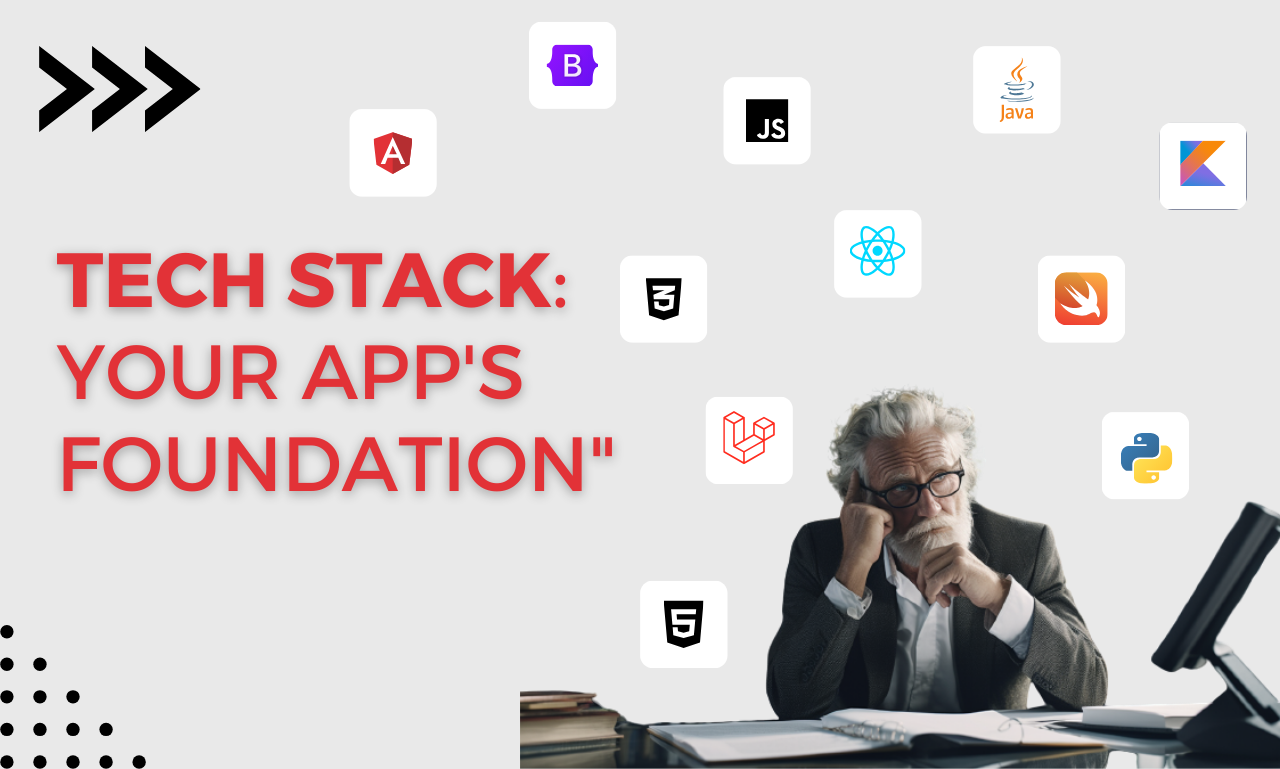
Introduction
Selecting the appropriate technology stack is a crucial decision when developing a web or mobile app. The technology stack, often referred to as the tech stack, encompasses all the programming languages, frameworks, libraries, and tools used in the development process. Making the right choices at this stage can significantly impact your project's success. In this blog, we'll explore the key factors to consider when selecting a technology stack for your web or mobile app.
1. Define Your Project Requirements
Before delving into the specifics of technology, it's essential to understand your project's unique requirements. Consider factors such as:
App Type: Is it a simple website, a complex web application, or a mobile app? The type of application you're building will influence the choice of technologies. For instance, a basic website may require different tools compared to a data-intensive web application.
Target Platforms: Are you developing for iOS, Android, or both? The choice of technology may vary based on your target platforms. You'll need different stacks for iOS (Swift or Objective-C) and Android (Java or Kotlin) development.
Performance: What performance benchmarks must your app meet? If you're building a real-time, high-performance system, you might lean towards technologies like Node.js or Go, which are known for their speed and scalability.
Scalability: Will your app need to handle increasing loads? If your app is expected to grow rapidly, you'll want to consider technologies and infrastructure that support easy scaling, like cloud-based services (AWS, Azure, Google Cloud).
Budget and Timeframe: What are your budget constraints and deadlines? Your choice of technology may also be influenced by budget and time constraints. Some technologies are more cost-effective or allow for faster development than others.
2. Programming Languages
The choice of programming language is fundamental to your tech stack. Here are some popular options:
JavaScript: JavaScript is widely used for web development, with frameworks like React, Angular, and Vue.js. It's a versatile language that's supported by virtually every browser, making it a top choice for web development.
Python: Known for its simplicity and versatility, Python is often used for web applications and back-end services. Popular web frameworks in Python include Django and Flask.
Java: Java is a robust choice for Android app development. If you're targeting the Android platform, it's essential to have a good understanding of Java.
Swift and Objective-C: These are common choices for iOS app development. Swift is the newer, more modern language for iOS development, while Objective-C is still used in some legacy projects.
PHP: PHP is a popular server-side scripting language commonly used for web development. It's known for its ability to embed within HTML code and interact with databases, making it suitable for building dynamic web applications.
3. Front-End and Back-End Frameworks
Front-end and back-end frameworks streamline development. For web development, popular front-end frameworks include:
React: React is a JavaScript library for building user interfaces. It's known for its component-based architecture, which promotes code reusability and maintainability.
Angular: Angular is a comprehensive front-end framework developed by Google. It provides a full suite of tools for building robust web applications.
Vue.js: Vue.js is a progressive JavaScript framework for building user interfaces. It's known for its simplicity and ease of integration into existing projects.
For back-end development, consider:
Node.js: Node.js is a JavaScript runtime for server-side development. It's ideal for building fast, scalable network applications.
Django and Flask (Python): Django and Flask are popular Python frameworks for web development. Django provides a full-stack framework, while Flask is a micro-framework that offers more flexibility.
React Native: React Native is a popular framework for building mobile apps using JavaScript and React. It allows you to develop cross-platform apps for both iOS and Android with a single codebase.
4. Databases
The choice of the right database is crucial. Consider these options:
Relational Databases (SQL): Examples include MySQL, PostgreSQL. These databases are well-suited for applications with structured data and complex queries.
NoSQL Databases: Examples include MongoDB, Cassandra. NoSQL databases are ideal for applications with unstructured or semi-structured data and where scalability is a concern.
Select a database that aligns with your data model, scalability needs, and performance requirements.
5. Hosting and Deployment
Determine where and how your app will be hosted and deployed. Options include:
Cloud Services: Cloud providers like AWS, Azure, and Google Cloud offer scalability, reliability, and a wide range of services. They are a great choice for web and mobile apps that need to scale as they grow.
Shared Hosting: Shared hosting is suitable for small websites with low traffic. It's cost-effective but may lack the scalability and performance required for larger applications.
Dedicated Servers: Dedicated servers provide full control and flexibility, making them a good choice for apps with specific configuration needs.
Serverless Architecture: Serverless computing simplifies scalability and management by allowing you to focus on code without managing server infrastructure.
6. Third-Party Services and APIs
Consider integrating third-party services and APIs for various functionalities, such as payments, geolocation, authentication, and analytics. This can save time and effort in development and provide pre-built solutions for common features, reducing development time and costs.
7. Community and Support
Evaluate the developer community and support available for the technologies you choose. Active communities and ample resources can be invaluable when troubleshooting issues and staying updated with the latest trends.
Choosing the right technology stack for your web or mobile app is a critical decision that can impact the success of your project. By carefully considering your project requirements, programming languages, frameworks, databases, hosting, third-party services, and community support, you can make an informed decision that sets your app on a path to success. Remember that technology stacks are not one-size-fits-all, and the ideal stack will depend on the specific needs and goals of your project. It's a decision that requires thoughtful consideration and planning to ensure a successful development journey.

